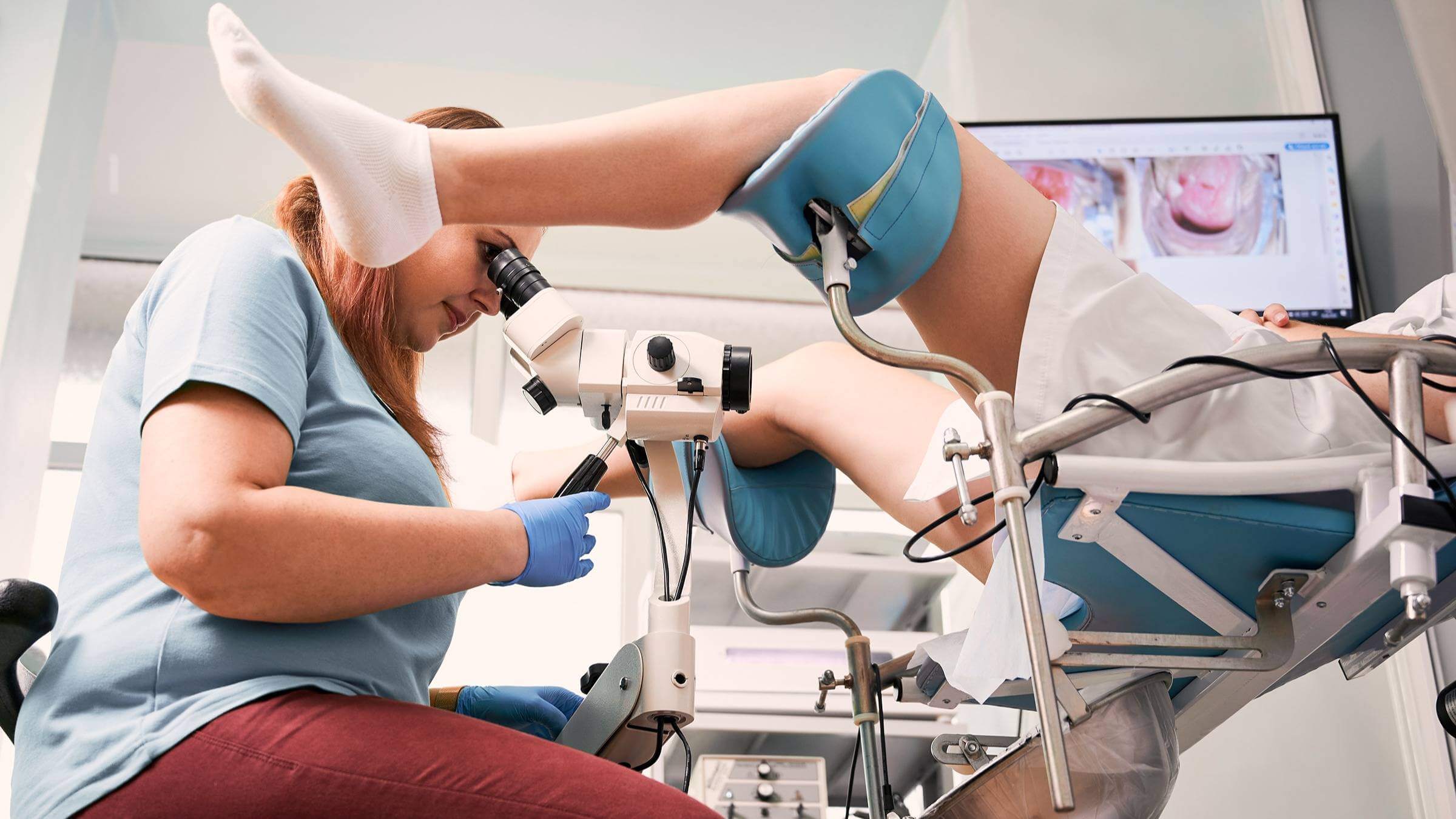Cervical cancer refers to cancerous growth in the cervix, the lower portion of the uterus, that connects directly with the vagina. The human papillomavirus, which is a sexually transmissible infection, is the most common cause. Early cervical cancer can be asymptomatic, so screenings for the disease are essential. As cancer advances, symptoms can include abnormal bleeding, pelvic discomfort, painful intercourse, and discharge. Cervical cancer can be caused by several factors, including:
HPV infection is the leading cause of cervical carcinoma.
Age: Cervical Cancer is diagnosed most frequently in women older than 30 years.
Smoking: Women with cervical cancer are more likely to smoke than women who do not smoke.
Weakened Immune System: Women with weakened immune systems, such as HIV/AIDS patients or organ transplant recipients, are more likely to develop cervical cancer.
Treatment of cervical cancer depends on its stage and can include chemotherapy, radiation therapy, or a combination. In addition, there are many ways to prevent cervical cancer. These include getting the HPV vaccination, using safe sex, and having regular cervical cancer screenings.
Cervical cancer screenings aim to detect abnormal cells before they become cervical cancer. The screenings are crucial because cervical cancer can be silent in its early stages. The Pap test and HPV test are the two most common cervical cancer screening tests.
The Pap Test:
It involves taking a small sample of cells and examining it under a magnifying glass to look for abnormal cells. During a Pap Test, a healthcare professional will use a unique speculum tool to open the vaginal walls. Then they gently collect a cervix sample using a small spatula or brush. The sample is sent to a lab for examination using a microscope. This will check for abnormal cells and changes in cells that may indicate cervical cancer. The Pap test can be done during a routine gynecological examination. It is a simple, painless procedure. The Pap test is a vital part of cervical screening. It is recommended to women at 25 years old or on the recommendation of their healthcare provider, depending on their risk factors. Additional testing and treatment might be needed to prevent cervical cancer if abnormal cells are found during a Pap. The next step will depend on how severe the abnormal cells are and the results from any follow-up testing. The healthcare provider will recommend a repeat Pap in 6-12 months if the abnormal cells are low-grade. This is to determine if the cells have returned to normal or if there has been a progression.
Further testing may be required if the abnormal cells are of high grade or if other factors are present, such as the human papillomavirus. Colposcopy is an additional test that involves examining the cervix with a unique tool and taking a biopsy if necessary. Treatments may include radiation therapy, chemotherapy, or a combination if the biopsy reveals precancerous or cancerous cells. If abnormal cells are found during a Pap, women must follow their healthcare provider’s recommendations for further testing and treatments. Early detection of precancerous conditions and their treatment can help prevent cervical cancer.
HPV Test:
The HPV test detects the human papillomavirus (HPV), the leading cause of cervical carcinoma. Many people infected by it do not show any symptoms. During an HPV screening, a healthcare professional will take a sample from the cervix. This is similar to a Pap Test. The HPV test detects high-risk HPV types more likely to cause cancer. As part of cervical screening, the HPV test and Pap test are often combined. This is especially true for women aged between 25 and 65. The recommended interval to repeat screening every five years is if both tests are negative. Additional testing and follow-up can be recommended if the HPV test results are positive or abnormal cells are detected in the Pap test. If a woman’s Pap test shows normal cervical cells, but her HPV test is positive, her healthcare provider might recommend that she repeat the HPV testing in 12 months. Or they may suggest she undergo a colposcopy for a more thorough evaluation of the cervix. Additional testing or treatment might be required if abnormal cells are found during a colposcopy or if the HPV remains positive after 12 months. The healthcare provider will recommend a repeat Pap in 6-12 months or a colposcopy if abnormal cells are found on the Pap. If abnormal cells are found on the colposcopy or the Pap tests continue to show abnormal results, a biopsy can be performed to determine if cancerous or precancerous cells are present. If cancerous or precancerous cells are found, the treatment options include chemotherapy, radiation therapy, or a combination. If abnormal cells are found on the Pap or if positive HPV test results, women must follow the recommendations of their healthcare providers for further testing and treatments. Early detection and treatment are crucial to preventing cervical cancer. They also improve the outcome. Women should talk with their healthcare providers to learn about their personal risk factors for developing cervical cancer. They should also follow the recommended screening schedule. This may include the Pap or HPV test. Early detection of precancerous conditions and their treatment can help prevent cervical cancer.
ASC Report:
The American Cancer Society recommends women start cervical cancer screening when they are 25 years old or earlier if there are risk factors such as a weak immune system or previous cervical cancer. Women aged 25 to 65 should undergo a Pap Test every three years or a combination of Pap and HPV tests every five years. Women should discuss their risk factors with their healthcare provider and their screening schedule. Regular cervical cancer screenings are essential for detecting cervical cancer at an early stage when it can be treated most effectively. They can also save lives. Women’s health is critical. Regular cervical cancer screenings can help detect the disease early when it is most treatable.


